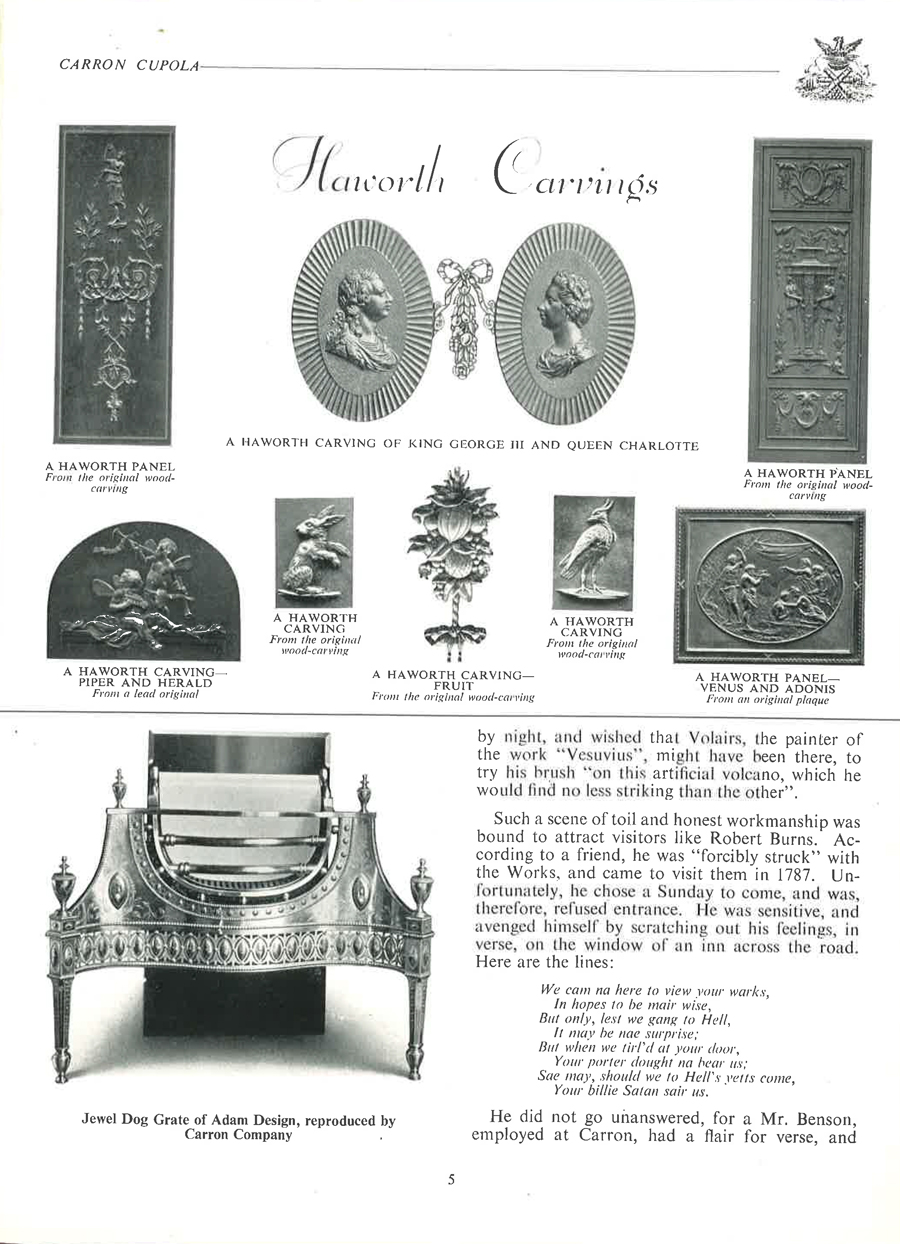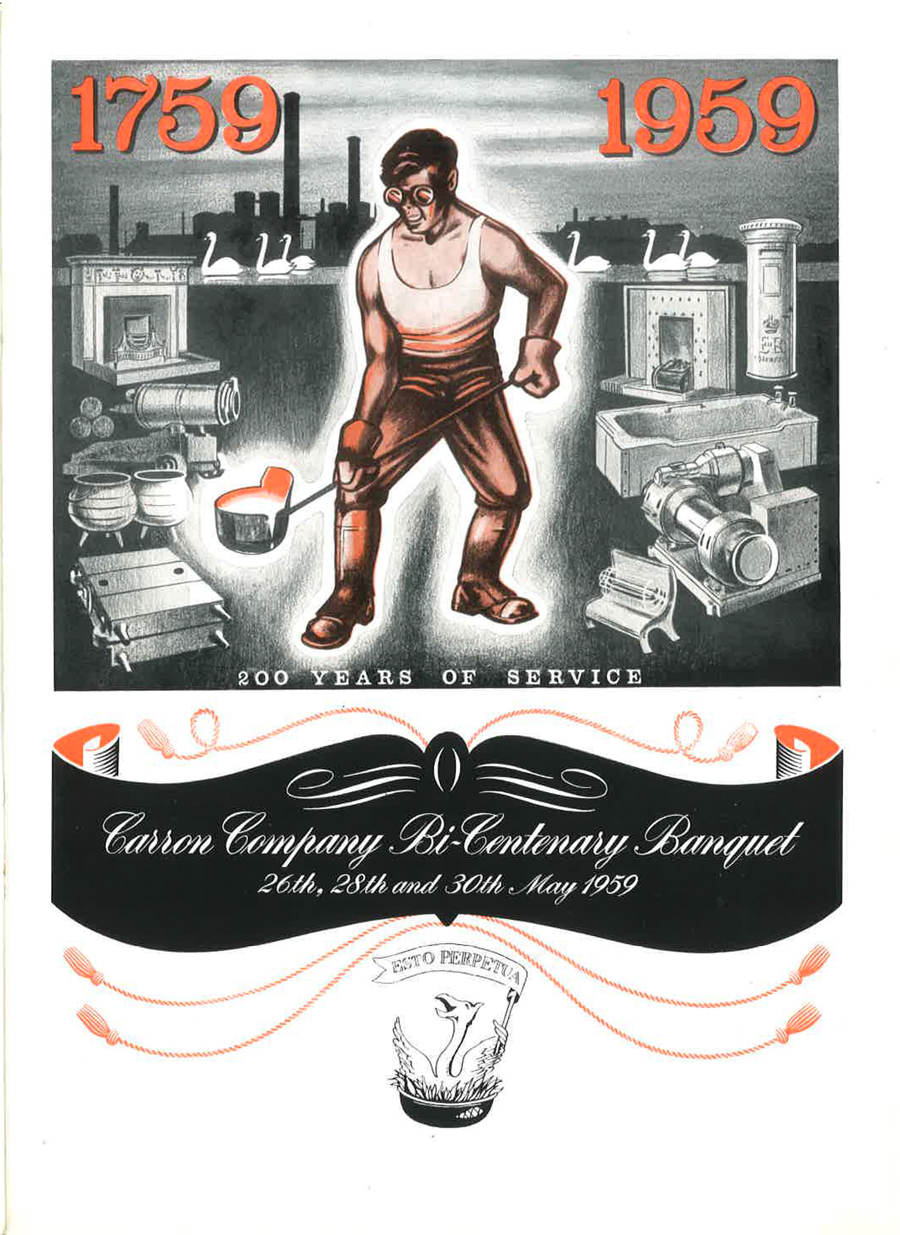Learn all about the people who lived on Forge Row and worked for Carron Company in the ironworks, including children and “clerkesses.”
The stark contrast between different people’s lives on this one street can be clearly seen when we compare the stories of two widows who both resided in Forge Row at this time.
fields['text']) echo $section->fields['text']; ?>
Forge Row emerged in the very early days of Carron Company, and initially housed management, or key workers of the company along with their families and a domestic servant. In 1765, the company erected a further four houses for labourers (Watters p. 35). By the 1830s Forge Row “ran from where the clock tower is today, and cut through the site of the present works to the northwest corner of the forge dam” (147). The houses were “a long row of two storeys with white-washed walls and a red pantile roof which overlooked the Forge Dam” (382).
The 1841 UK Census was the first census to ask for any personal information regarding who lived in each household throughout the country. The information gathered offers us a glimpse into the lives of the residents of Forge Row between 1851 and 1911. In 1851 the first few homes on Forge Row housed more affluent employees of Carron Iron Works. These men were often employed as clerks and had sufficient income to employ a domestic servant. The rest of Forge Row was mostly inhabited by general employees of Carron Company. These families usually consisted of parents with 4-6 children. The “head of the house” was employed in such roles as Forgeman, Blast Furnace Overseer, Pattern Maker, Iron Dresser and the like. Within these families, sons who were no longer in education were employed by the company alongside their fathers.
The stark contrast between different people’s lives on this one street can be clearly seen when we compare the stories of two widows who both resided in Forge Row at this time. One woman, aged 71 at the time of the census, was recorded as receiving an annuity and continued to engage the services of a housekeeper. The other widow, of around the same age, lived at the opposite end of the street. Her late husband had been a Foreman, but both she and her widowed daughter were described as “paupers” on the census.
Children and Work
The Education (Scotland) Act, implemented in 1872, stated that all children between the ages of 5-13 years must attend school. Control of education was taken away from Churches and given over to elected school boards. Poverty was no longer an acceptable excuse for non-attendance. In 1901 the school leaving age was raised to 14, and in 1973 it was raised again to 16. Compulsory school attendance ensured that no child of school age was formally employed at Carron Iron Works.
By 1901, the stark division of wealth along Forge Row appears to have disappeared. At this time all employees living on this street undertook positions within Carron Iron works such as Iron Moulder, Foreman, Clerk, and Storekeeper. The common household set-up from 1851, of families with four to six children, continued. Sons of working age continued to follow their fathers into Carron Iron Works employment, however, for the first time, the census recorded that daughters also being employed as “Commercial Clerkesses.”


The Haworth Brothers
Two notable early residents of Forge Row were the Haworth brothers Henry and William. Both men had attended the Royal Academy in London as students of sculpture. The family connection to Carron Iron Works can be traced to the very early days of the company in the late 1700s, when their father and grandfather undertook design commissions for the company (88). In 1779 Henry Haworth was employed by Carron Company to design decorative moulds. Upon his death two years later, his position was filled by his brother William who remained with the company for 56 years. William is recorded to have paid the highest sum for his company house which, like his brother, was located on Forge Row. He was also one of the few employees earning enough to have to pay income tax in 1779 (89). The family connection continued through the generations with William’s grandson John Kerr employed at Carron as a modeller. John Kerr’s sons, William Haworth’s great grandsons, undertook positions as pattern maker and designer of iron art. Henry Haworth’s descendants are also recorded as having remained in the employment of Carron for most of the 1800s (91).
Peter Rae
In 1932, Prince George visited Carron Iron Works. On his tour he met with a former resident of Forge Row called Peter Rae.
Mr Peter Rae who at 81 years of age, was one of the oldest men employed at the Works. He told the Prince that he had worked there for 67 years and that he had been born at Forge Row. Mr Rae then presented HRH with a picture of himself, which was duly accepted! (201).
fields['text']) echo $section->fields['text']; ?>
Peter Rae, like many men employed at Carron, had followed in his father’s footsteps. The 1851 census shows that his family lived on Forge Row at the time, and that his father, also Peter Rae, was employed as a labourer for the company. In 1881, Peter Rae Senior at the age of 75, was still employed at the ironworks, now as an Iron Weigher, and still resided in Forge Row with his wife. Longevity with the company appears to have run in the family.
By Iona Christison.

